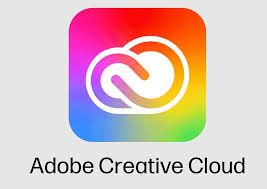
If you’ve ever admired a magazine cover, a viral YouTube video, a sleek advertising campaign, or a jaw-dropping animation… chances are, Adobe was behind it all. Not front and center, but quietly in the background, like a skilled artisan who hands over the tools and lets creators shine.
Adobe doesn’t need to shout to dominate. Its empire was built with layers, vectors, and timelines — with the precision of a digital tailor who has been dressing the creative world for over three decades.
But what exactly makes Adobe so essential? Why, in the middle of 2025, is it still the gold standard across industries as varied as filmmaking, photography, graphic design, and artificial intelligence?
A Toolbox for Building Worlds
Adobe isn’t just Photoshop — though many still think of it that way. It’s a complete creative ecosystem, where each program extends the other, and all of them work together like perfectly tuned instruments.
- Photoshop: The legendary image editor that redefined visual reality. Today, it includes generative AI editing, object removal, background replacement, and even the ability to generate images from simple text prompts.
- Illustrator: The birthplace of logos, icons, and sharp vector graphics. A program so precise it turns vague ideas into elegant geometry.
- Premiere Pro & After Effects: The dynamic duo of professional video editing. From Netflix documentaries to Instagram reels, if it moves and makes you feel, it probably passed through here.
- Lightroom: For photographers who crave more than filters. Color correction, batch editing, intelligent presets… a digital darkroom with a poetic soul.
- InDesign: The king of editorial layout. Magazines, books, catalogs — anything that demands pixel-perfect typography and clean, structured elegance.
- Adobe XD and Figma (post-acquisition): Tools built for interface design and user experience. Because today, design is something you scroll through — not print.
And let’s not forget Adobe Acrobat (the undisputed master of the PDF), Audition (for professional audio editing), or Animate (the modern heir of Flash, reborn for 2D and motion graphics).
And What About AI? Adobe Isn’t Catching Up — It’s Leading
In a surprising turn even critics had to admit, Adobe has embraced generative AI without sacrificing creative control. Enter Adobe Firefly, a powerful suite that allows:
- Image generation from written prompts
- Style transfers and intelligent design assistance
- Content-aware fills and visual completions
- Automatic layout generation and adaptive templates
Best of all: Adobe trains its AI on licensed, ethically sourced content, protecting intellectual property and creator rights — a stark contrast to competitors scraping the internet like digital pirates.
Adobe Creative Cloud: A Sky That Rains Creativity
Adobe’s real stroke of genius was understanding that creativity doesn’t live in just one device. So, with Creative Cloud, you can:
- Access your projects from anywhere
- Instantly use premium fonts across all software
- Collaborate live with team members around the world
- Sync, store, and publish from the cloud in real time
A powerful antithesis: Once, creativity meant isolation. Now, with Adobe, it means connection.
Quiet Innovation: Adobe Sensei
Away from the hype, Adobe has quietly developed Adobe Sensei, its proprietary AI engine powering features like:
- Face recognition and photo organization
- Automated design recommendations based on trends
- One-click background removal and object alignment
- Audio transcriptions and auto-subtitling
- Intelligent color and sound correction
All of it designed not to replace the artist — but to return time to the creative.
Not Just for Designers Anymore
Perhaps the most fascinating thing about Adobe is this: it’s no longer just for graphic designers or filmmakers. Today, it’s used by:
- Entrepreneurs designing their first brand launch
- Teachers creating interactive educational content
- Doctors and engineers visualizing complex data
- Content creators and influencers who need to stop the scroll
In other words, Adobe doesn’t just sell software — it sells possibility.
Conclusion: Is Adobe Perfect? No. Is It Essential? Probably.
Yes, Adobe is a giant. But not one that crushes — one that lifts. Like an invisible staircase that helps millions rise a little higher in their ability to imagine, build, and shape the world through color, form, motion, and word.
And in an age where everyone can create, but not everyone knows how, Adobe remains the visual language that turns instinct into impact.
Because ultimately, the best software isn’t the one that does it for you. It’s the one that lets you do it — better.
